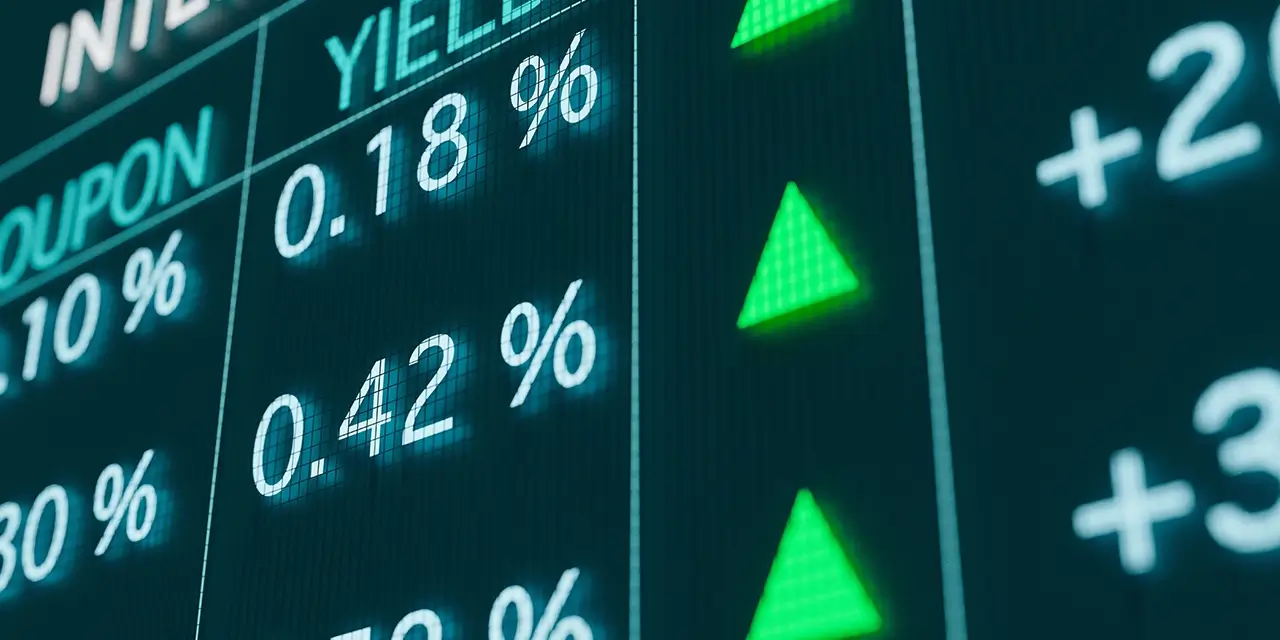By Caroline Grimont
An English translation of an (alleged) Chinese curse is, “May he live in interesting times.”
I don’t know about you, but I certainly feel like these times are interesting enough, though I wouldn’t necessarily call them cursed. Not yet, at any rate.
What I will call these times, though, is volatile. Generally, volatility is a tendency to unpredictability, and when it comes to stocks, it means the same thing. Market volatility is basically how much and how quickly stock prices rise and fall. Put another way, market volatility is a measure of how unstable or unpredictable the market is over a certain period of time.
If you think that recent times are more volatile than most, you’re not wrong. On April 2nd, or Donald Tump’s “Liberation Day,” the U.S. markets fell nearly 10% over two days, and then, with the pause in his tariffs, the markets gained nearly 10% in one day. That’s unpredictable. That’s volatile.
This feeling you’re having, though, is not backed by historical fact. Recent Morningstar research found that in 30 years of daily return history for the Morningstar US Market Index, which represents 97% of stock market capitalization, there were only 43 days in which the benchmark either gained or lost more than 5%. Three of those days were in April 2025, though, so maybe your gut isn’t all that wrong.
How to Cope with Increased Market Volatility?
I have a five-part toolkit for dealing with volatility. Let me tell you what I do.
1. Keep Calm.
The first thing to remember is that volatility is normal. Remember the 2008 crash caused by the sub-prime crisis? And the COVID-19 crash of 2020? And the market downturn of 2022? Markets always fall – but remember, they always rise again. So first, keep calm. And then,
2. Remember Your Financial Plan.
Everyone should have a financial plan. This plan is a map. The destination is your financial goal. For most people, the ultimate goal is either retirement, or financial independence. Stops along the way include things like a home purchase, investments, education, children, marriage. But always keep your ultimate goal in mind. Chances are, no matter what the market does, that goal hasn’t changed. So stay focused on that goal, and
3. Don’t Be Hasty.
You know that whole gut thing we were talking about a little while ago? Chances are that’s less your gut talking, and more a cognitive bias known as ‘Recency Bias.’ Recency bias is a mental thing where we tend to give more importance to something that has just happened, and then make decisions accordingly. Recency bias in action would be us thinking that because the markets corrected after April 2, they’ll keep crashing. We might also have the knee-jerk urge to sell our stocks. But that would be a very bad idea indeed, because if we had sold our stocks in the crash after April 2, we would have missed the near 10% gain in the market on April 9. So you see? It is very, very difficult to correctly time the market, so I tend to not do it, and instead,
4. Go For a Walk.
No, I’m not being facetious. The news stresses me out, especially the news over the past month. When I feel anxious and overwhelmed, I physically walk away from my computer, from the news, from my portfolio. I find when I walk about, even a short walk around my office floor, it gives me a sense of perspective. Yes, the markets and the news are scary, but when I walk into the office kitchen and make myself a cup of coffee, I remember the world outside my portfolio, and it helps me calm down. Once I have put enough distance between what’s upsetting me and a hasty decision, I
5. Look For Other Options.
When the markets are scary, what can I do? Maybe buying the general market seems risky. But fixed income doesn’t give me the returns I need to achieve my goals. Are there other options? Yes actually. There are products that give you access to the markets, while reducing volatility. These products are called low volatility investment strategies and are available as exchange traded funds (ETFs) among others.
What are Low Volatility ETFs?
If your financial goals are your ultimate destination, and the market is the road that gets you there, volatility could be considered potholes along the way, making your path bumpy and unenjoyable. Low volatility ETFs might help give you a smoother ride in an otherwise bumpy market.
These funds invest in companies that are steadier than their peers – meaning they tend to have lower wild swings in their stock prices. An important thing for investors to remember is that low volatility ETFs could reduce the volatility that you experience, but the volatility will never go to zero. Which means you will experience some volatility, but it will be lower than the broader market.
The way it works is the ETF provider picks stocks based on standard deviation over a set time period in the past. Standard deviation basically means how much something deviates from its mean. In the case of stocks, this means how much a stocks’ returns fluctuate from its average. Wild fluctuations generally mean that a stock is riskier. Low volatility ETFs try to avoid the riskier stocks, so they would pick the stocks with lower volatility.
Eagled eyed readers would have immediately jumped on the fact that this means that when markets are soaring, these steady-eddy stocks might not rise as much as say GameStop in January 2021. This is true. But when markets are falling, low volatility stocks tend to fall less, and so a low volatility ETF’s time to shine would be in a bear market, or a market downturn.
Harvest newest line-up HVOL and HVOI.
For investors who want the comfort of lower volatility, a fund to consider could be the recently launched Harvest Low Volatility Canadian Equity ETF, ticker HVOL.
This fund offers a low volatility strategy for a smoother investment experience, holding 40 top Canadian equities, ranked and weighted by their risk score and market cap weight, with a 4% maximum weight per name. The portfolio’s Canadian equities are scored according to risk and fundamental metrics. Five stocks currently have the maximum allotment of 4% in the portfolio. Four of these are big Canadian banks – Scotiabank, RBC, TD and CIBC – and the fifth is Waste Connections. More than 50% of the portfolio is held in the financials and industrials sectors.
Investors who want all of this, and also want regular cash distributions, could consider the Harvest Low Volatility Canadian Equity Income ETF, ticker HVOI, which offers the same portfolio as HVOL, but with an aim to generate high monthly cash distributions through a covered call strategy.
As Harvest ETFs explains it, “Covered call option writing is about striking the right balance. At its most basic level, when you write a covered call option, you gain premiums but can miss some market upside.” You can find out more about covered calls here.
From a tax standpoint, it is important for Canadian investors to remember that this income received from covered calls is considered capital gains and is not considered interest income. This is important, because 50% of income from capital gains (up to $250,000) is generally tax free, while the remainder is taxed at your marginal rate. However, interest income is taxed as ordinary income.
Final Word
If I had a crystal ball, I’d pick the stocks that would rise the most, and retire in the next 3 months. But I don’t know what the future holds. What I do know is that with the uncertainty south of the border, market volatility is here to stay.
If you, like me, believe that strong Canadian companies – banks, mines, railways, utilities – can withstand market pressures better than riskier sectors, then you could consider these low volatility ETFs. One with quarterly distributions through dividends, the other supported by income from covered calls.
Disclaimer
Commissions, management fees and expenses all may be associated with investing in Harvest Exchange Traded Funds (managed by Harvest Portfolios Group Inc.). Please read the relevant prospectus before investing. The funds are not guaranteed, their values change frequently, and past performance may not be repeated. The information is meant to provide general information for educational purposes. Any security mentioned herein is for illustration purposes and should not be taken as an invitation to purchase or sell such security. The content of this article is to inform and educate and therefore should not be taken as investment, tax, or financial advice.











